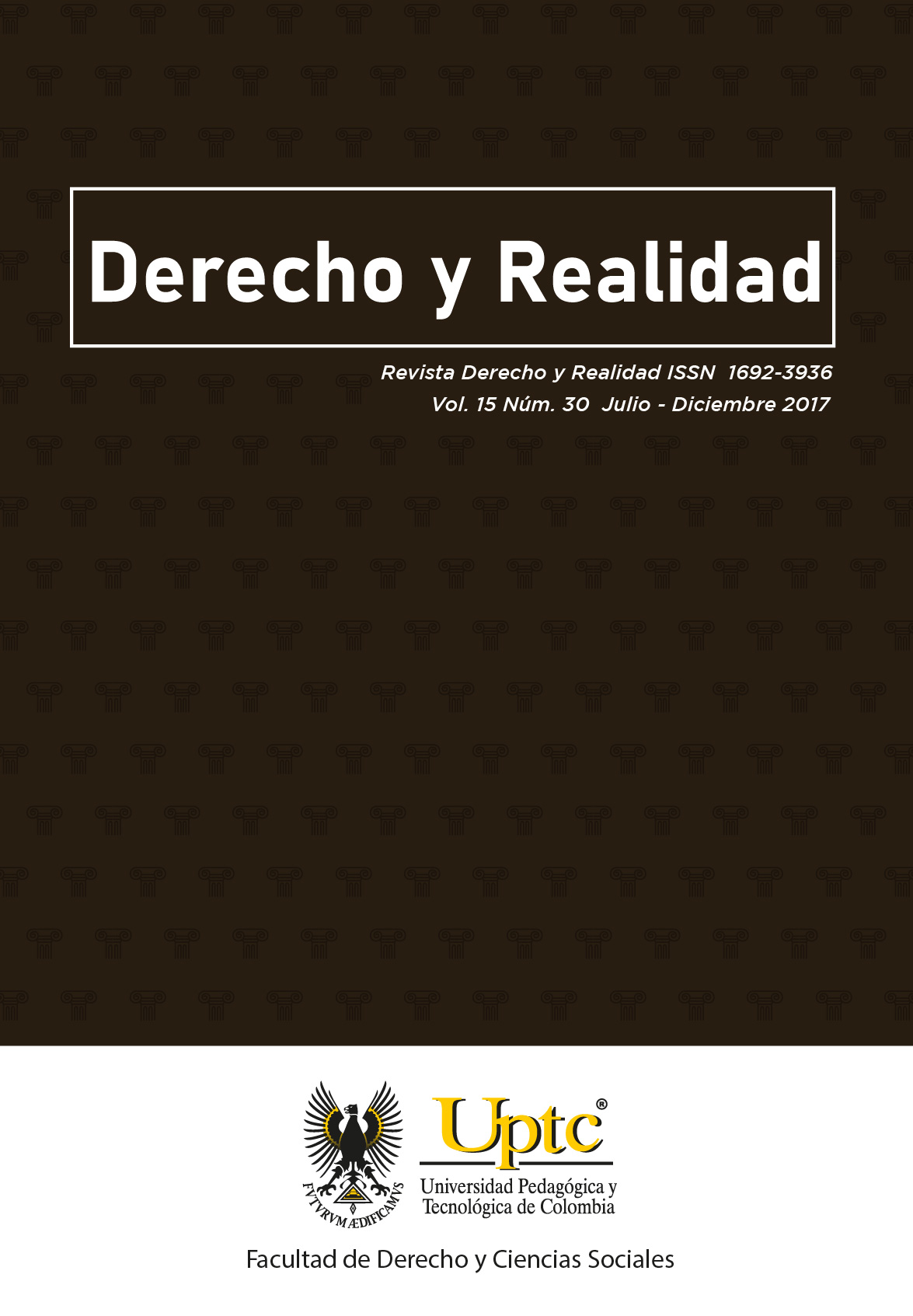Colombia and Venezuela: two countries, one people A comparative analysis of the evolution of the Human Development Index

Abstract
This paper is a review and comparative analysis of the human development index between the States of Colombia and Venezuela, which invites us to make a quantitative reflection about the way in which these two nations have placed themselves in this important index. of measurement, and from the analysis given by this program of the United Nations for development is addressed in a historical way the concept of development, so that based on it is comparatively and statistically identified the phases of comparative evolution of these two nations in the Development context.
Keywords
Social welfare, Economic growth, Integrated development, Participatory development, Human development
Author Biography
John Maximino Muñoz Téllez
Magister (c) Master in Human Development - FLACSO Argentina, Lawyer National University of Colombia. Investigator. Advisor to the Land Restitution Unit, Republic of Colombia.
Daniel Rigoberto Bernal Gómez
Doctor of Law (c) National University of Mar del Plata Argentina, Master in Administrative Law Free University, Lawyer National University of Colombia. Research Professor Pedagogical and Technological University of Colombia, Santo Tomas University Tunja Sectional.
References
- Andrade, G. E. (2011). La ambigüedad de la información en el censo venezolano: etnia vs. raza. Recuperado el 11 de 8 de 2021, de http://redalyc.org/articulo.oa?id= 82320080007
- Bernal Gómez, D. (2008). Ciudad y globalización. Las consecuencias de la estandarización de lo local. derecho y realidad.
- Bernal Gómez, D. (2015). Análisis dentro del principio de no intervención de derecho internacional en el acceso a mercados bajo el marco de acuerdos internacionales de libre comercio latinoamericano con relación al caso de Colombia. Principia Iuris.
- Censo 2011 Redatam. (s.f.). Recuperado el 11 de 8 de 2014, de http://www.redatam.ine.gob.ve/Censo2011/index.html
- Herrera, S. I. (2010). La importancia de la educación en el desarrollo: La teoría del capital humano y el perfil edad - ingresos por nivel educativo en Viedma y Carmen de Patagones, Argentina. Revista Pilquen: Sección Ciencias Sociales, 13(13), 1-9. Recuperado el 11 de 8 de 2014, de http://scielo.org.ar/scielo.php?script=sci_arttext&pid=s1851-31232010000200007
- INE. (s.f.). Recuperado el 11 de 8 de 2014, de http://www.ine.gob.ve
- Krasilshchikov, V. (2011). Human Development Indices and its Dynamics in Latin American countries: The Social-Demographic Factors of the Left Turn? Recuperado el 11 de 8 de 2014, de https://dialnet.unirioja.es/servlet/articulo?codigo=3694395
- Programa de las Nacionas Unidas para el Desarrollo. (2000). Desarrollo humano en Chile. Santiago de Chile.
- Serrano, J. P., y Poutou, J. R. (2006). El Índice de Desarrollo Humano y la Metodología para su Determinación. Recuperado el 11 de 8 de 2014, de http://repositoriodigital.ipn.mx/handle/123456789/15537
- Stiglitz, J. E. (2002). El desarrollo no es sólo crecimiento del PIB. Recuperado el 11 de 8 de 2014, de https://dialnet.unirioja.es/servlet/articulo?codigo=5028342
- World Population Prospects, the 2010 Revision. (s.f.). Recuperado el 11 de 8 de 2014, de Esa.un.org: http://esa.un.org/unpd/wpp/Excel-Data/population.htm